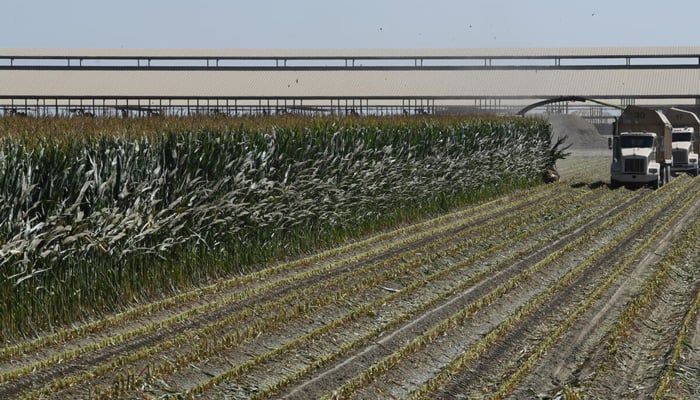As President Donald Trump’s broad global tariffs came into play this weekend, American farmers who were hoping for a fruitful year found themselves contending with declining crop prices and the likelihood of losing market share abroad.
“We’re struggling to stay above break-even right now,” remarked Jim Martin, a farmer from Illinois in his fifth generation, who cultivates corn and soybeans.
“We anticipated this,” he shared with AFP regarding Trump’s tariffs. “Now we’re just waiting to see how everything unfolds.”
Starting Saturday, the president implemented a 10% “baseline” tariff on goods imported from most of the United States’ trading partners, with the exception of Mexico and Canada.
Moreover, several nations, including the European Union, China, and India, are expected to face even steeper tariffs beginning Wednesday.
With the threat of retaliation looming, farmers—who represent a crucial voting bloc in Trump’s 2024 re-election bid—are bracing for potential financial losses.
Following the announcement of the tariffs and China’s retaliatory measures, prices for various American agricultural goods fell sharply alongside stock market declines on Friday.
China, which ranks as the third-largest importer of U.S. agricultural products after Canada and Mexico, is particularly vulnerable, facing a 34% U.S. tariff on its goods in addition to a prior 20% tariff.
In retaliation, Beijing has announced its own 34% tariff on American imports, compounding previous rates of up to 15% on U.S. agricultural products.
The imposition of these tariffs elevates the cost for businesses importing U.S. goods, diminishing American farmers’ competitive edge.
Market Challenges
“There’s less motivation for buyers to purchase U.S. soybeans; they can obtain them from Brazil for a much lower price,” explained Michael Slattery, a corn, soybean, and wheat farmer from Wisconsin.
Approximately half of U.S. soybean exports and a substantial portion of sorghum are sold to China, which invested $24.7 billion in U.S. agriculture last year, including purchases of chicken, beef, and other commodities.
However, the U.S. Department of Agriculture (USDA) reported a 15% decline in China’s purchases last year, attributing this to increasing competition from South American producers.
Slattery anticipates that Chinese buyers will further reduce their purchases.
“Losing access to this market is significant because it’s costly to secure alternative buyers,” stated Christopher Barrett, a professor at Cornell University specializing in agricultural economics.
During the previous tariff conflict under Trump’s first term, China was the primary target and the sole retaliator, Barrett noted.
With all trading partners now affected, farmers may find it even more challenging to seek new market opportunities.
Temporary Fixes
“Over 20% of farm income stems from exports, and farmers depend on imports for vital materials like fertilizer and specialized machinery,” the American Farm Bureau Federation warned this week.
“These tariffs will raise the costs of essential supplies, while retaliatory tariffs will inflate the prices of American products on the global market,” the report emphasized.
The International Dairy Foods Association noted that “extended and extensive tariffs” on major trading partners and burgeoning markets threaten to jeopardize billions of dollars in investments aimed at satisfying global demand.
According to the USDA, retaliatory tariffs against the U.S. resulted in over $27 billion in agricultural export losses from mid-2018 to late-2019.
While the department allocated $23 billion to support farmers affected by trade disputes in 2018 and 2019, Martin from Illinois likened this assistance to “a band-aid on a much larger issue.”
“The president claims that the long-term outcome will be better, so we need to figure out how patient we should be,” he added.
Like many of his peers, Martin hopes for additional trade agreements with countries other than China.
Slattery characterized Trump’s policies as “a significant reorganization of the international landscape,” and is preparing for further losses in the coming years.
“I’ve sold as much of my soybeans and corn as I could before Trump indicated the tariffs he’d impose,” he said.





